What you can't see at the Schenectady Museum
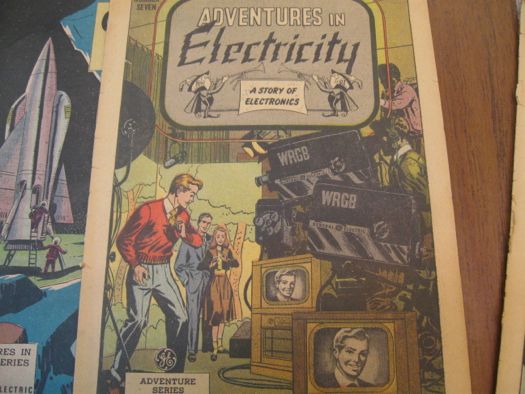
Among the things you can't see in the Schenectady Museum right now.
So, when you go to a museum you get to see all this cool stuff that they have out on display, right? But museums often have a lot more stuff than space to display that stuff. Often, there are all kinds of interesting things stored away that you can't see.
So we asked Chris Hunter, Director of Archives and Collections at The Schenectady Museum, to show us a few of the interesting items in the museum's collection that you can't see right now.
What did find? Everything from comic books, ray guns and refrigerator songs to 1920's solar cell research tools.
Want to see?
One of the first things Chris showed us was this -- one of Edison's first tin foil phonographs:
The tin foil recordings were made of leaded tin foil, not aluminum. The museum actually has a tin foil recording, but it's currently being worked on by a textile conservator. Last week, Chris says, they started working on an arrangement with Lawrence National Lab at Berkley to digitize the recording. "Nobody knows what's on it." Chris says. "It hasn't been played since June of 1879. Lawrence National Lab developed a system to optically scan the wax cylinders so they don't have to come in contact with the styli. They have a high quality industrial grade scanner. They're modifying that technology so they can scan the tin foil."

The label for the recording reads "Recorded for all Time," but it wasn't exactly truth in advertising. Chris says you could get a few plays out of an aluminum recording before it was destroyed by the stylus.
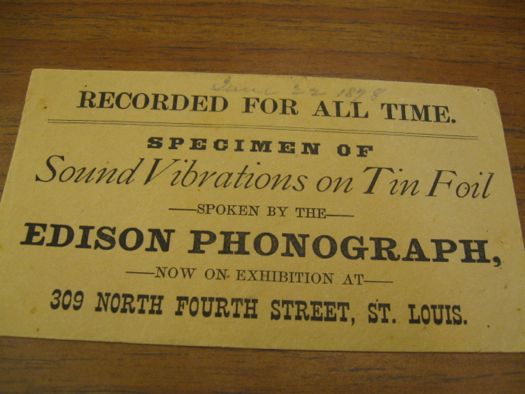

They've also got a working Edison Wax Cylinder Phonograph -- something that has an interesting history to it.
Apparently Edison's research on the phonograph was hitting a dead end around the time his lighting research was picking up. One of the clauses for his lighting research funding was that he ignore his phonograph research for a while. That's when Alexander Graham Bell steps in. Chris tells the story:
A lot is made of the Edison - Tesla rivalry, but from a business standpoint Edison considered Alexander Graham Bell his biggest rival. Edison was doing some work on telephone research when Bell invented. And it was Edison's carbon microphone that helped make Bell's telephone a commercial success.So when Bell hears Edison invents the phonograph, he thinks 'This is this is so simple. Why didn't I think of this.' So Bell researches phonograph technology as Edison temporarily leaves it behind.Bell tries some discs first and then settles on wax cylinder technology. Then Edison sees one of his favorite inventions about to be commercialized by somebody else. So in 1886 he gets back into the phonograph game and creates this version of the wax cylinder.
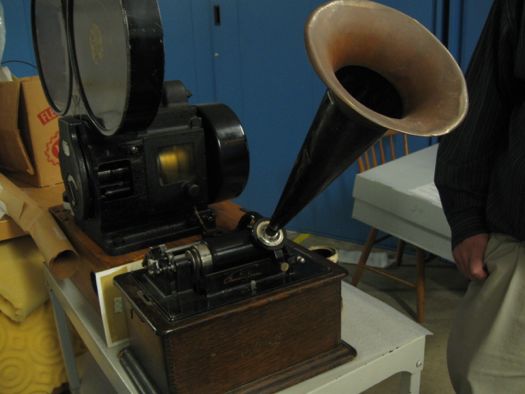
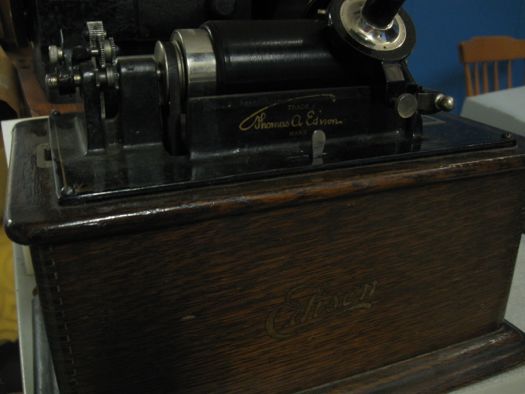
By 1949 GE had come out with this little number. One of the earliest magnetic recorders, it was made about a year after GE opened a big electronic factory in Syracuse. Yep, it's a kids toy, but Chris says the technology was something that most audio professionals didn't have access to at that time.

Here's something we thought was fun. Comic books.
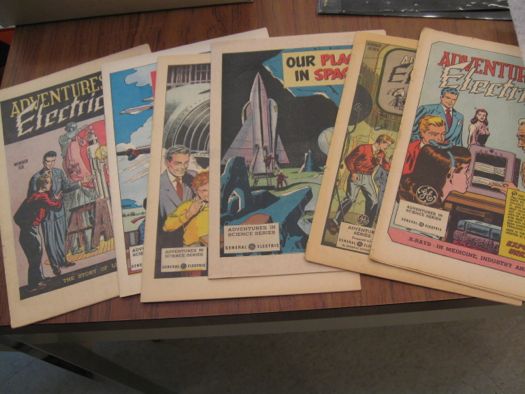
"G.E. produced a series of 25 comic books from about 1947 to 1960 trying to overcome a shortage of engineers and scientists," Chris says. "So a teacher or student could just write to G.E. and they'd send them free comic books. By the late 60s they gave away over 125 million comic books. A couple that were translated into Spanish."
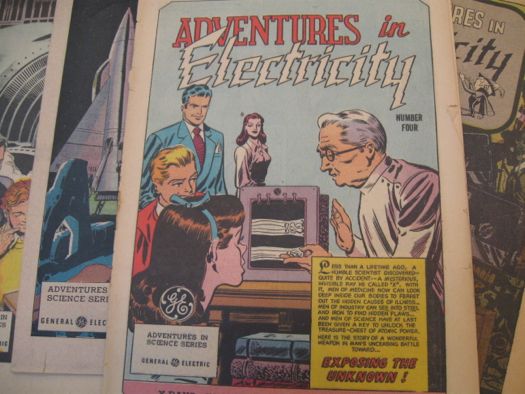
There were also a few promotional toys, like this Rocket Refrigerator Ray Gun, that helped promote G.E. refrigerators:

There's a space helmet that goes with it, but they're still looking for that.
"Especially with the refrigerators," Chris says, "they pulled out all kinds of stops." They had all kinds of promotional materials from the ray guns to playing cards to the G.E. Refrigerator Songbook."
Stop.
Refrigerator. Songbook?
"They were promotional tools given out to G.E. dealers in the 1930s. They had classic 20s songs printed in them, with the lyrics changed to make them about G.E. refrigerators."
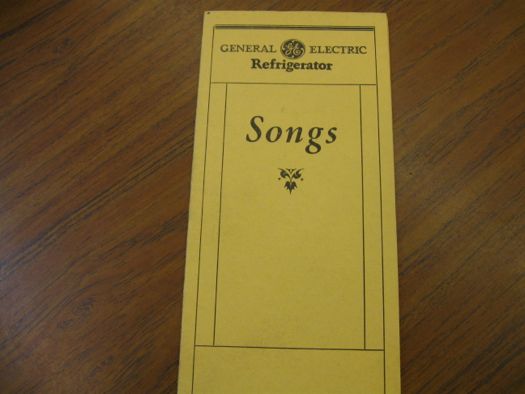


And then there's the guest book from the G.E. research lab. This one is very fragile, so it hardly ever comes out of storage.
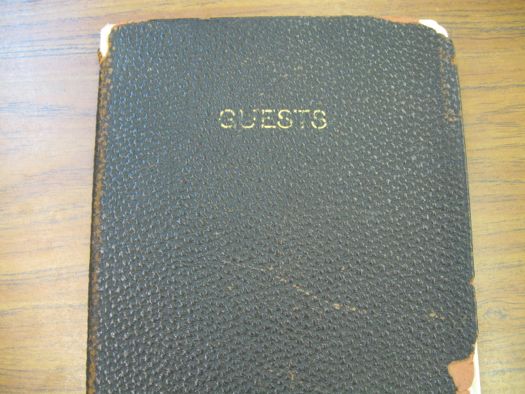
It's signed by at least ten Nobel prize winners that they know of.
Here's Niels Bohr's signature:
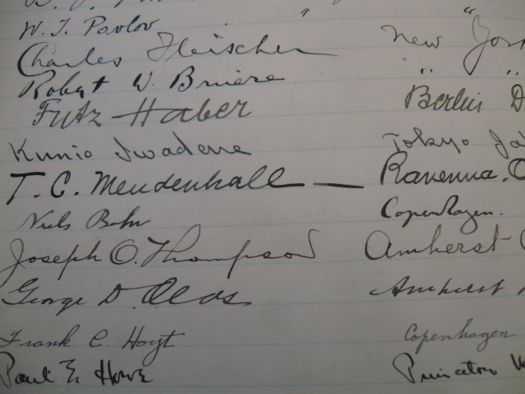
And Edison. Four lines above him is Marconi.
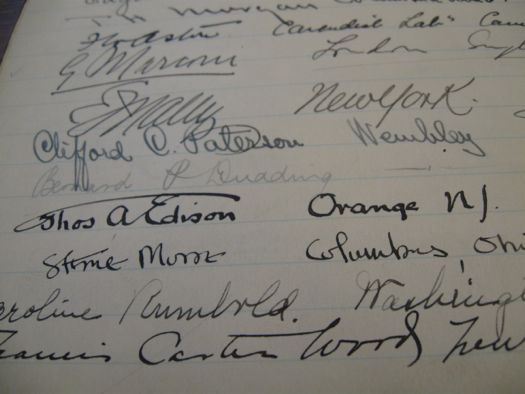
"Ivan Pavlov. Fritz Haber wrote a comment "wishes to learn something," which started a whole string of comments.

"Niels Bohr, Harlow shapely. All the early proponents of atomic theory -- they all passed through this area. It kind of reminds you that this place has been tech valley for a long time."
A few other fun things:
An electric car charging station from 1910:
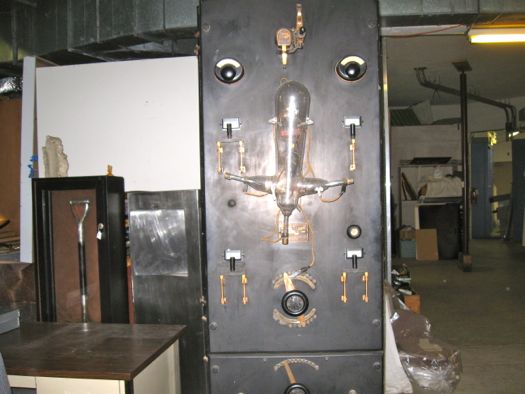
"People might have had them in their personal garage, they were in public garages.
In the early 1900s the electric car was easier to start than the gas powered cars because it was before the electric starter-- so you had to crank. You didn't crank the electric cars. They were marketed toward ladies. Even Henry Ford's wife had an electric car."
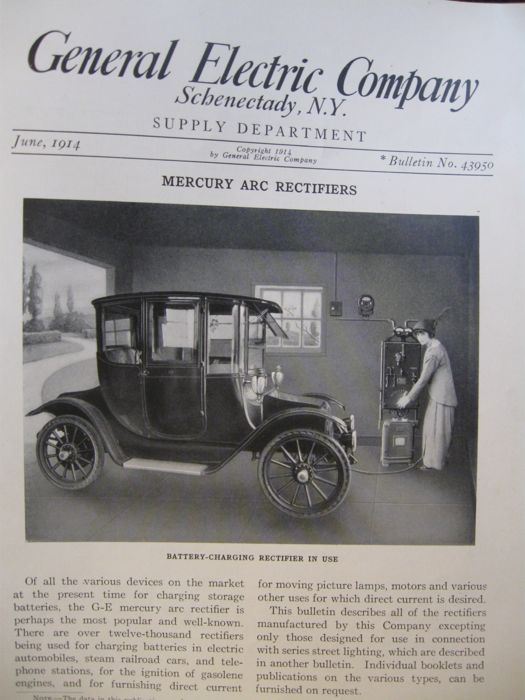
"No, this is not a landmine," says Chris. "But it looks like one. It's actually a chamber used in early solar cell research back in the 1930s and early 40s. They used this to purify selenium to use in solar cells.
Here are a couple of interesting light bulbs.
An early fluorescent light. That's calcium coral inside.
And a 1,000 watt bulb from the 1920s used for stage lighting or airport beacons.
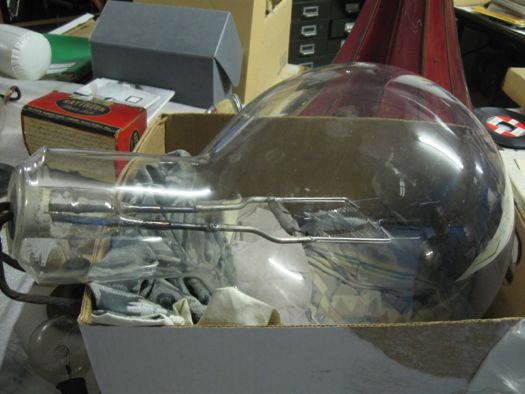
An X ray machine from the 1920's

"You kind f get that kind of Flash Gordon, Buck Rodgers vibe from it," says Chris.
And then there's the factory art collection. G.E. would commission painters to create these pictures for each month of the year based on industry scenes and they'd make calendars to give to customers.
"In the mid 1920s they commissioned Gerrit Beneker a pretty well known industrial artist to paint portraits of everyday workers. These paintings were used on employee newsletters and things like that. They were promotional. Kind of like the recent G.E. Super Bowl commercial, but they were never seen by 50 million people."
Of course there's a whole bunch of great stuff that you can see at the Schenectady Museum right now, so if you've got some time on your hands, you might want to check it out.
Thanks to Chris Hunter for the tour!
Hi there. Comments have been closed for this item. Still have something to say? Contact us.
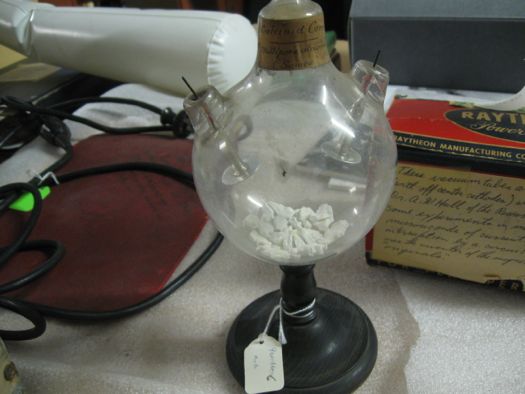
Comments
I've been in the archive before. It's very cool. My understanding is that you can request access for research purposes. Is that no longer the case?
... said StanfordSteph on Feb 8, 2012 at 4:17 PM | link
awesome! how about a behind the scenes from other local museums, like the Albany Institute? State Museum? Historic Cherry Hill?
... said karner blue on Feb 8, 2012 at 4:40 PM | link
We're working on it :-)
... said Mary on Feb 8, 2012 at 4:50 PM | link
I bought some wax phonograph cylinders at a Troy anitque shop for $5. Would they be able to play them for me? Oddly, the labels do not tell you what song is recorded, or who the artist is.
... said Jessica R on Feb 8, 2012 at 6:41 PM | link
Archives are soooo much fun - it's like peeking behind the curtain in the wizard of oz or something. Don't forget local college collections too! (like Union College for example.. I work with the Permanent Collection & Special Collections archives, and might be able to arrange something - it is fun for us to share too!)
... said karamia on Feb 8, 2012 at 7:58 PM | link
I'd love to see a follow up on the results of the tin foil scan. Will it be a recording of Edison talking smack about Westinghouse?
... said Tim on Feb 8, 2012 at 10:35 PM | link
Great article. Thanks for highlighting these hidden treasures.
StanfordSteph - yes, you can do research in the archives with an appointment. I'm hoping Chris Hunter will chime in with more details.
... said Susan D'Entremont on Feb 8, 2012 at 11:14 PM | link
I've been to the museum several times with kid groups and my impression is that the exhibits don't change very much and much of the interactive stuff is broken. Please, bring out some of these treasures and share!
... said Burnt My Fingers on Feb 9, 2012 at 9:47 AM | link
@Mary & Karner blue: I love this idea! Don't forget that Albany Medical College has archives too - medicine in the 19th century was some craaazy business
... said Stef on Feb 9, 2012 at 3:17 PM | link
Would be nice if the museum could scan the comics and put them online for all to access and READ.
Henry C. Fagal (my father's uncle) was mayor of Schenectady !
Thanks for this !
... said Frederick F. Fagal Jr on Sep 27, 2012 at 9:17 AM | link